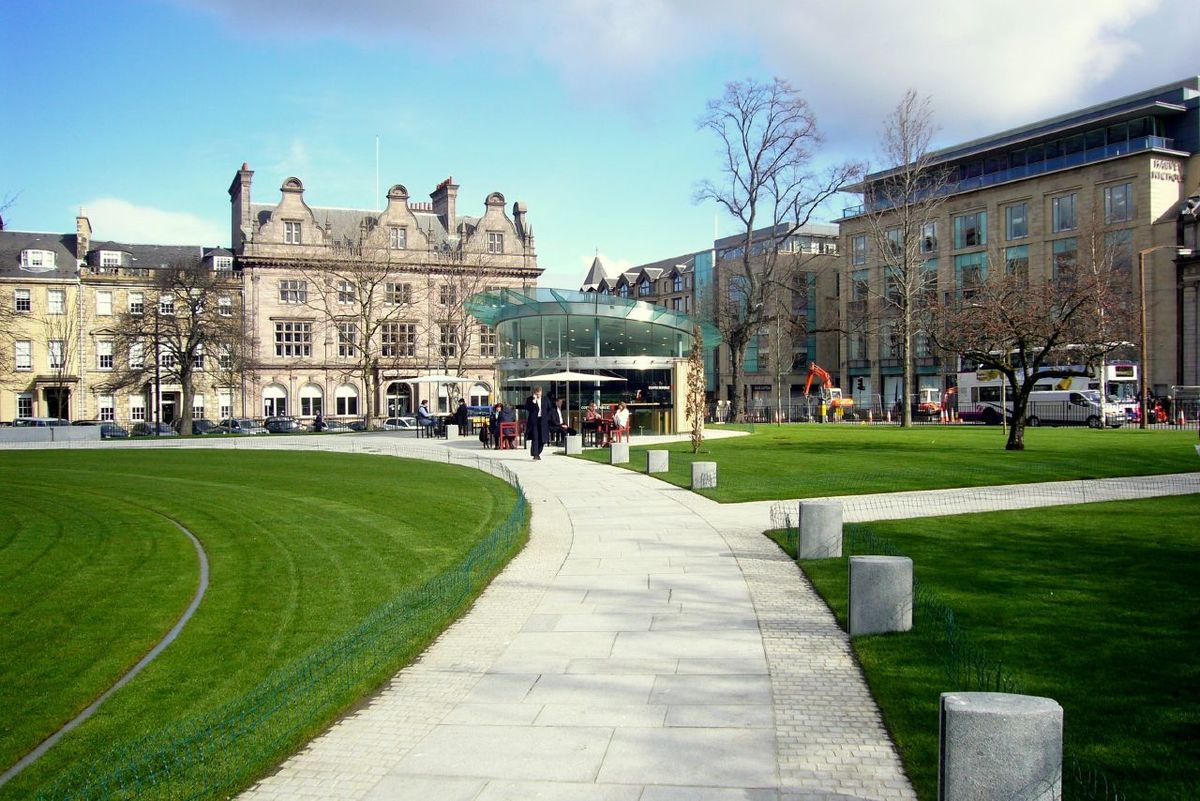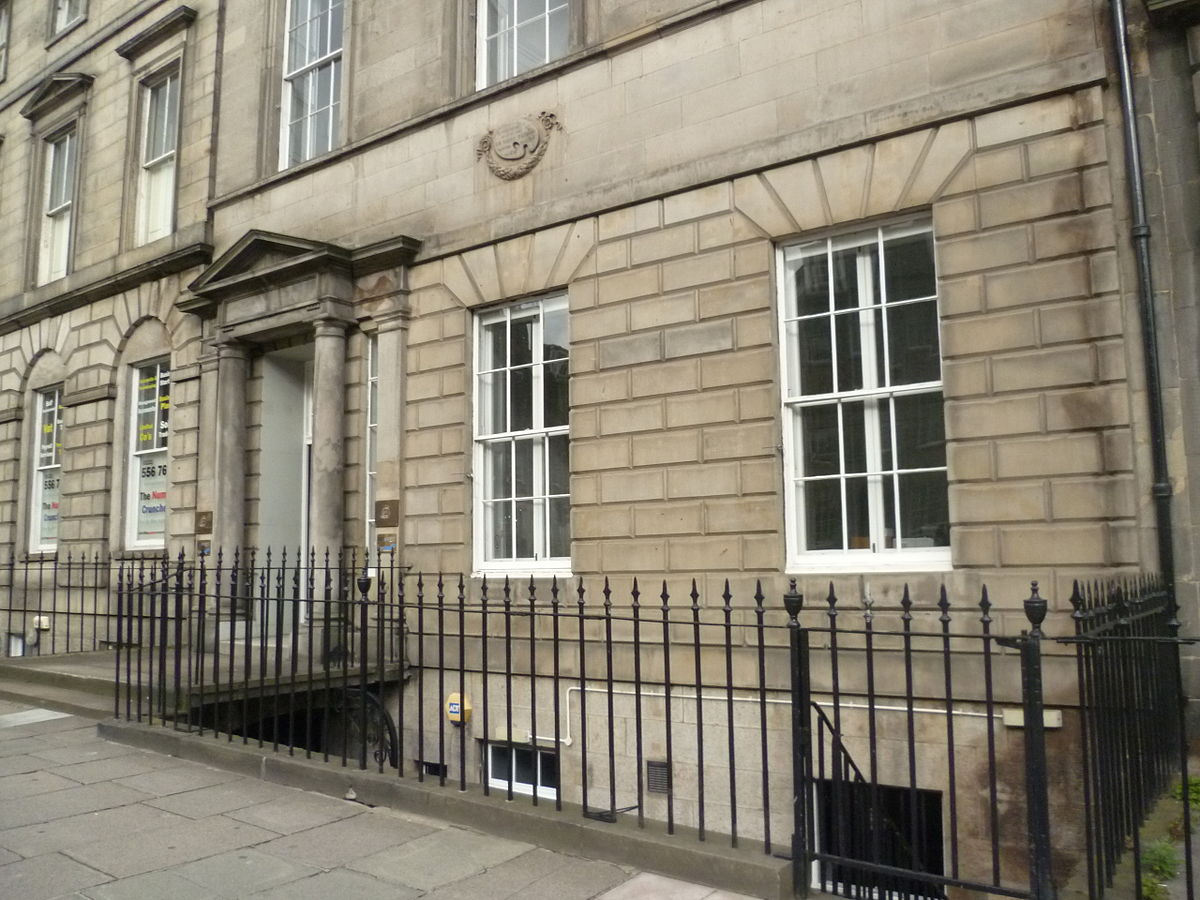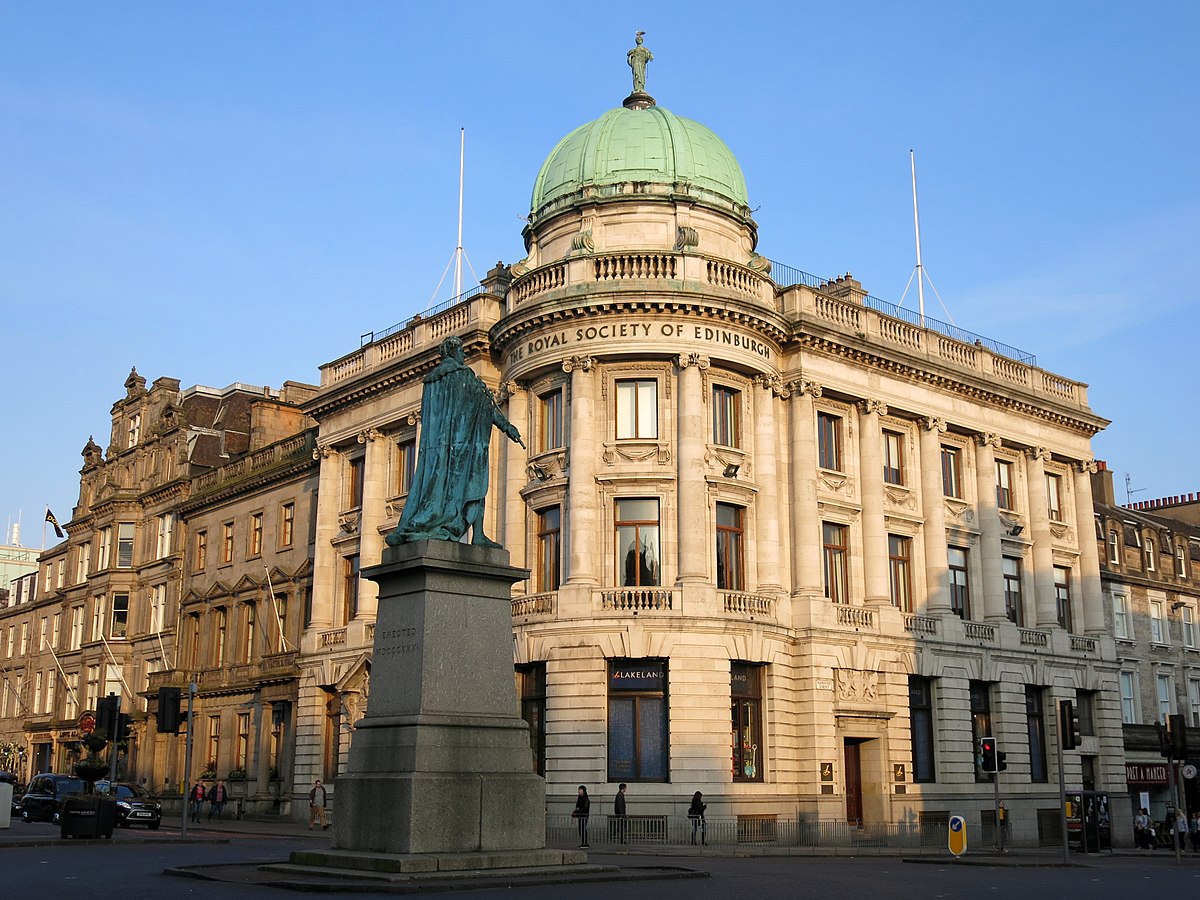
The Royal Society of Edinburgh
Photography: Enric, Wikimedia Commons (BY-SA)
The Royal Society of Edinburgh
The Founding Fathers of the Royal Society of Edinburgh included key figures of the Scottish Enlightenment such as David Hume, Adam Smith, William Robertson, Joseph Black, William Cullen, Andrew Duncan, the elder and John Walker. It evolved from the earlier Royal Medical Society and Edinburgh Philosophical Society and was formally established in 1783 by Royal Charter for “the advancement of learning and useful knowledge”. This was in order to embrace a more multidisciplinary approach to considering and solving the key issues of the age. The current society, with premises at number 22 George Street, has adopted an apt vision: “to play a leading role in the development of a modern Enlightenment that will enable Scotland to contribute significantly to addressing the global challenges facing humanity in the 21st Century.” The first volume of the Society’s transactions contained a seminal article on Uniformitarianism by the Geologist James Hutton entitled Theory of the Earth (see section 10 of the Old Town Walk narrative).
Walk 60 metres further along George Street to number 14.
The Commercial Bank of Scotland
A few buildings along you will come to number 14 George Street, in which The Commercial Bank of Scotland was formed in 1810. At the time the public had shown signs of disillusionment with the three existing charter banks (Bank of Scotland, British Linen Bank and the Royal Bank of Scotland). As documented in The Story of the Commercial Bank of Scotland by James Anderson (1910), "It was felt by many of the Scottish people that the three old Banks had become too…devoted to their own interests…to be the real promoters of the general good." The new Commercial Bank of Scotland started from a radically different philosophy, not reliant on a small number of the wealthy, but rather on the basis of several hundreds of more modest investors from all parts of the country.
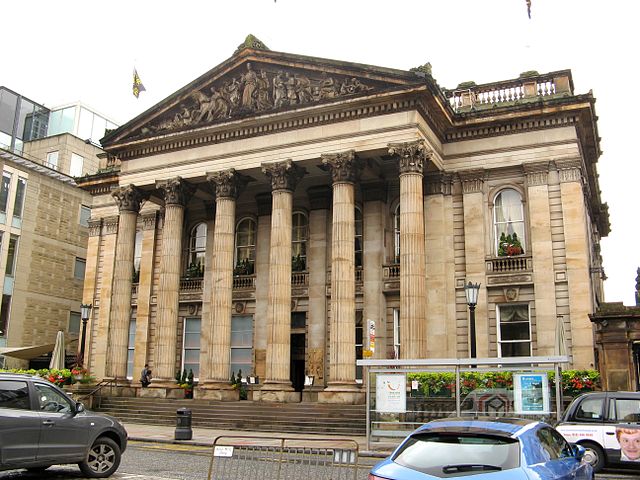
The Royal Bank of Scotland
Photography: Jonathan Oldenbuck, Wikimedia Commons (BY-SA)
In 1847 the bank moved into new premises at 14 George Street, an impressive Graeco-Roman edifice designed by the architect David Rhind (1808 – 1883). This was on the site of a recently demolished, albeit equally distinctive building by the original New Town planner James Craig (see section 1). That building had been designed for the Royal College of Physicians of Edinburgh, who, being for somewhat unclear reasons never quite happy there, sold it and moved to new premises on Queen Street.
Number 14 George Street is now a popular restaurant called the Dome. It makes use of the original bank’s large central lobby with glass domed ceiling.
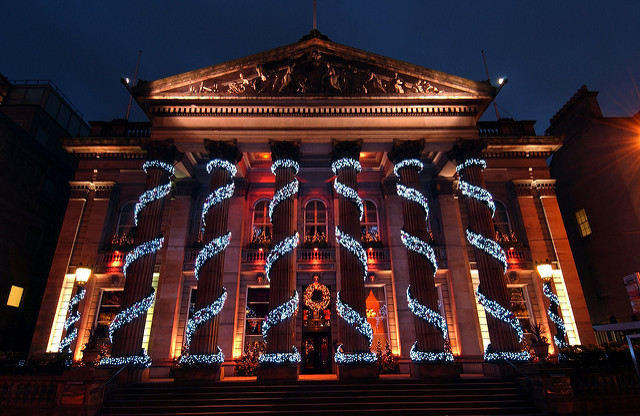
The Dome at night
Photography: This is Edinburgh (CC-BY-SA), Flickr
Also at 14 George Street you will find a plaque commemorating the founding at this site of the Royal Caledonian Horticultural Society in 1809 by Andrew Duncan, the elder (1744 – 1828). This was one of many societies created during the Enlightenment which delivered practical value to society. The advancement of knowledge of practical value had always been part of the guiding philosophy of the Scottish movement, to some extent distinguishing it from their French colleagues. This may have contributed to the not entirely tongue-in-cheek statement by Voltaire in 1762:
“today it is from Scotland that we get rules of taste in all the arts, from epic poetry to gardening ...” Voltaire also said “We look to Scotland for all our ideas of civilisation.”
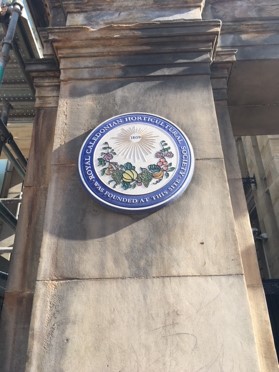
Plaque of the Royal Caledonian Horticultural Society
